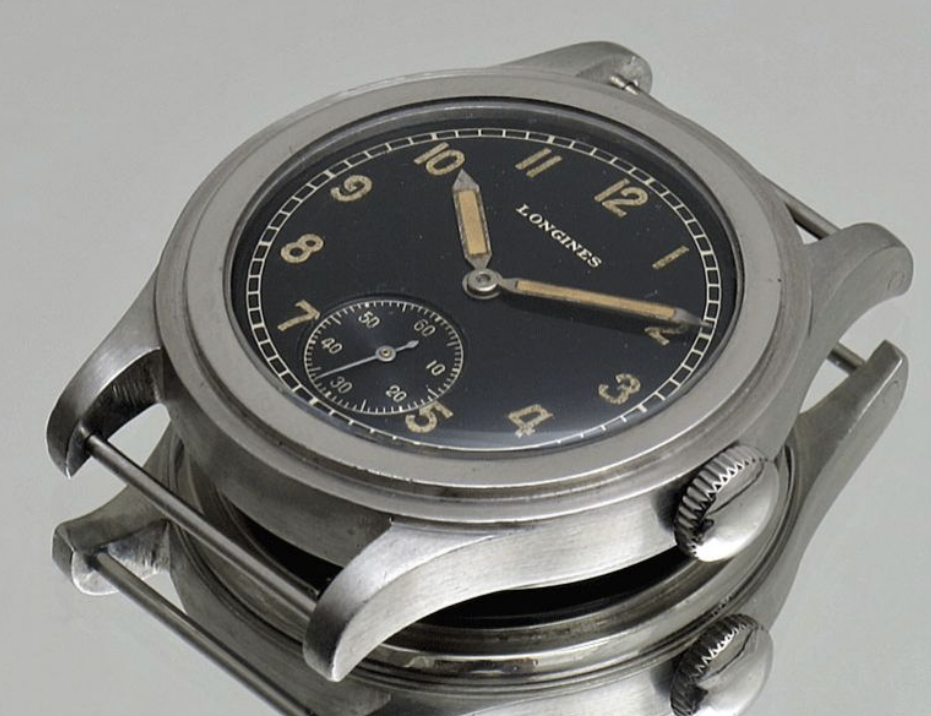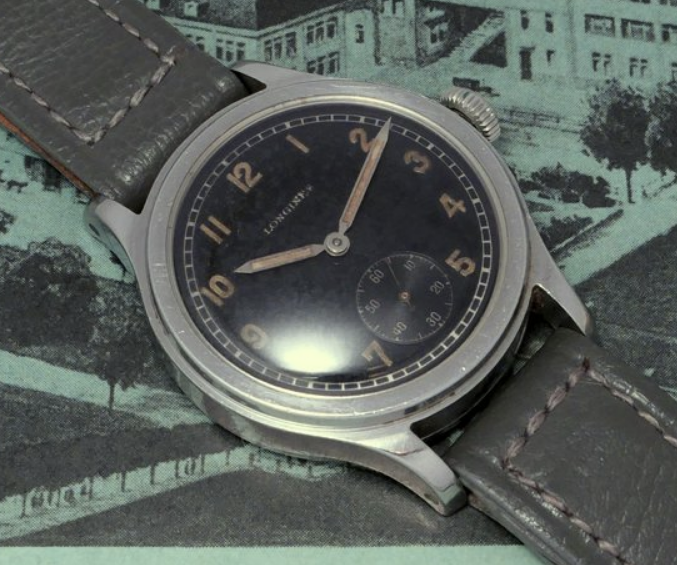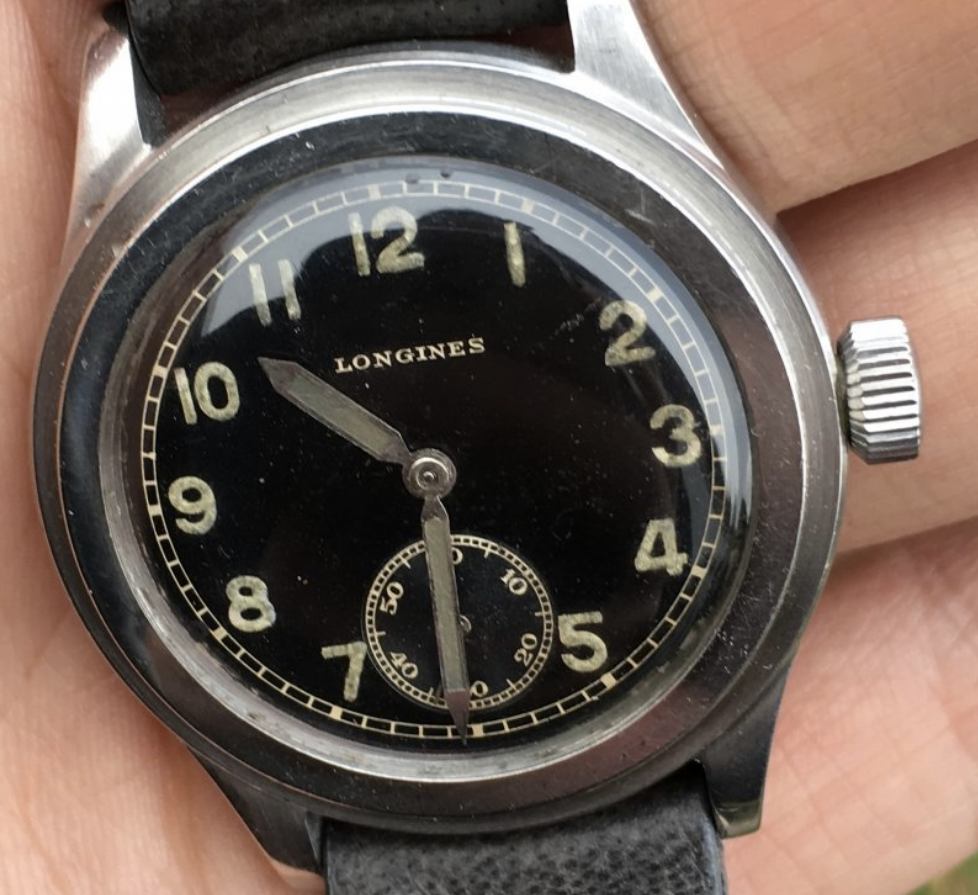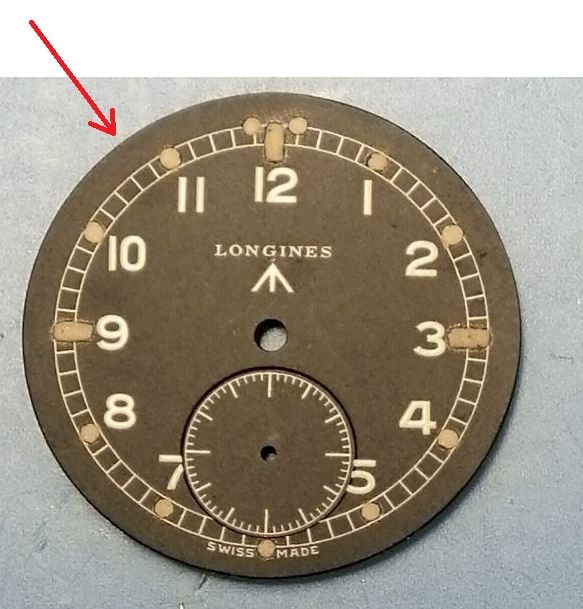DirtyDozen12
·Thank you very much for sharing those great photos of the dial, and for sharing the serial number of the movement. The dial appears to be convex. Apart from the curvature, I believe that there are some subtle but important differences between your dial and the "correct" ones that you posted. Before addressing the differences, I will say that I am skeptical about the two examples (first two photos are of the same watch) below. These dials are certainly similar to yours, but I think that they could have come from sei tacches.
Moving onto the "more likely to be correct" ones, the key difference is the sub-dial design, IMO. The first two examples (first two photos are of the same watch), have an "old" style of font that is prevalent on tre tacche dials. The next dial looks like those found in "DH" Longines from the early 1940s. [As a side note, I have also seen "DH" examples with the first dial below so it would be prudent to inquire with Longines before buying.] This sub-dial design is also prevalent on tre tacche dials. The last dial below is difficult to see, but the sub-dial appears to have a "railroad track" scale. In general, this type of scale is more indicative of a tre tacche dial than a sei tacche dial.
Moving onto the "more likely to be correct" ones, the key difference is the sub-dial design, IMO. The first two examples (first two photos are of the same watch), have an "old" style of font that is prevalent on tre tacche dials. The next dial looks like those found in "DH" Longines from the early 1940s. [As a side note, I have also seen "DH" examples with the first dial below so it would be prudent to inquire with Longines before buying.] This sub-dial design is also prevalent on tre tacche dials. The last dial below is difficult to see, but the sub-dial appears to have a "railroad track" scale. In general, this type of scale is more indicative of a tre tacche dial than a sei tacche dial.























